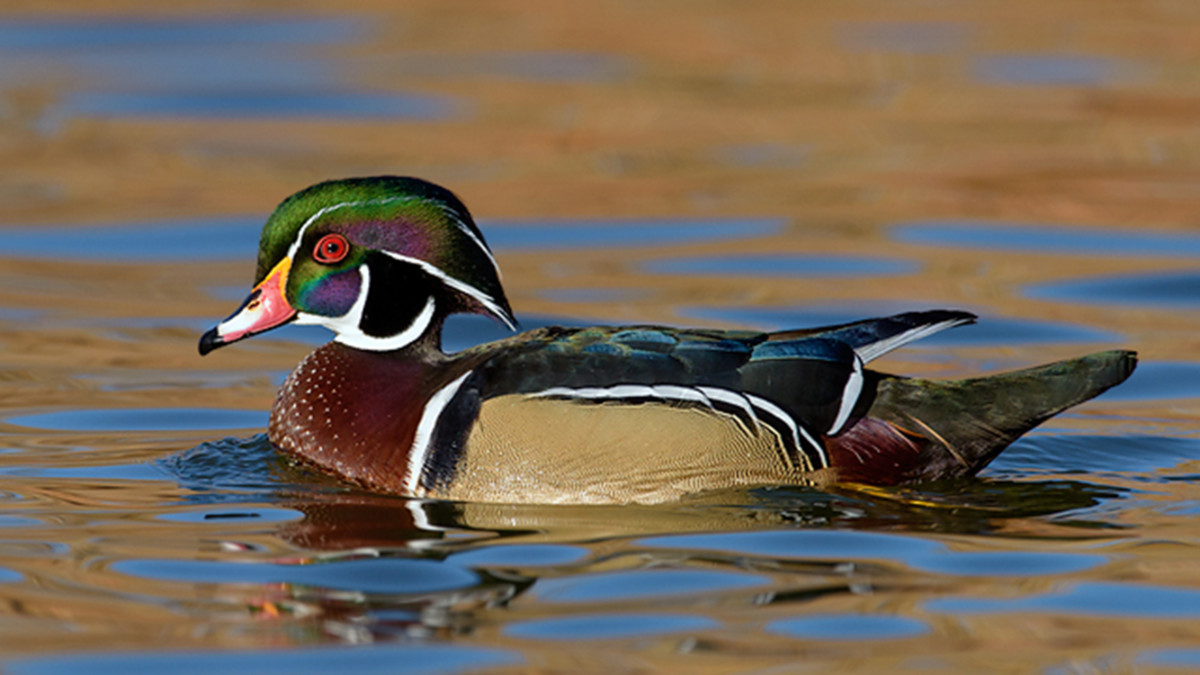
Regarded by most hunters as the most beautiful species of North American waterfowl, wood duck males, or drakes, are colorful enough to be mistaken for some exotic jungle species.
The places that wood ducks call home are equally pretty. They prefer small, heavily wooded bodies of water such as beaver ponds, creeks, marshes, and small lakes. Wood ducks are one of North America’s great conservation stories.
The duck’s nest in tree cavities, and the destruction of suitable nesting sites nearly drove the species to extinction in the 1920s. Aggressive efforts by hunter-conservationists, particularly the construction of artificial nesting boxes, brought the species back from the brink of extinction. Today they are widely abundant.
Scientific Name
Aix sponsa
A.K.A.
Woodies, acorn ducks
Bar Room Banter
The wood duck’s Latin name translates into “waterbird in bridal dress.”
Physical Characteristics
Wood duck males are easily distinguished by their crested purple and green head, which is accented by white lines running from their bill to their crest, eye is ringed by red, white chin and throat, maroon chest, tail is dark purple and black. The female has a gray-brown head with a small crest, white chin, throat, eye patches, whitish gray belly, the tail is long and gray. Both sexes have dark brown wings with white frosting and blue markings.
Habitat
Wood ducks live in wooded wetland areas with plenty of vegetative cover, particularly in the vicinity of mast-bearing hardwood trees. They can weave through unbelievably thick limbs and vegetation in order to reach watery landing areas. They breed throughout their northern range and winter in the southeastern U.S.
Diet
Acorns, hickory nuts, beechnuts, and wild rice, plus a variety of other nuts and seeds as well as aquatic vegetation and aquatic insects.
Life and Death
Raccoons, mink, opossums, and other predators will rob wood duck eggs nesting tree cavities. Juvenile and adult wood ducks fall prey to predatory fish, birds, and mammals. Wood ducks can live to be over 10 years old.
Breeding and Reproduction
Wood duck hens lay 6-16 eggs in a tree cavities or artificial nesting boxes placed by conservationists.
Telltale Sign
Besides the occasional feather, wood ducks leave very little physical evidence of their presence.
Edibility
Excellent, unless it is overcooked. On par with mallard.
If you don’t pause to appreciate the beauty of a wood duck after a successful hunt, there’s something wrong with you. The birds taste as good as they look.





